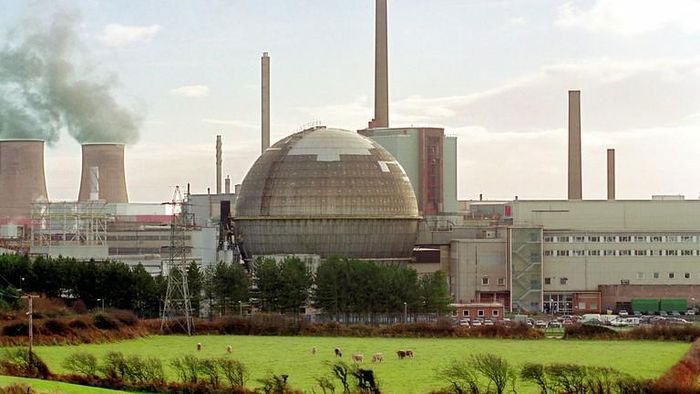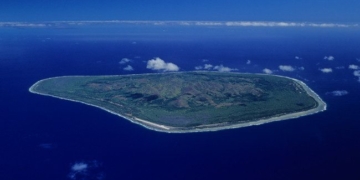According to reports, Sellafield, considered the most dangerous nuclear site in Europe, has developed a leak in a massive radioactive waste storage cavern, raising concerns about the safety measures at the facility as well as potential hazards to the public and the environment.
The two-square-mile (6 km²) plant, located in Cumbria, northwest England, is responsible for storing and decommissioning nuclear waste from weapons programs and electricity production. It was previously used to generate nuclear power from 1956 until 2003.

Cows grazing near the Sellafield nuclear recycling facility in Cumbria, England.
However, according to The Guardian, this decades-old facility, the largest nuclear site in Europe, has a list of safety issues, including asbestos and fire hazards.
More concerning are the cracks in the storage cavern that have sparked diplomatic disputes with affected countries, including the United States, Norway, and Ireland.
The Guardian reported on December 5, citing official documents it has seen, that damage to a toxic radioactive waste storage cavern has led to a leak that “could have serious consequences.”
“The leak could continue until 2050, potentially contaminating groundwater if the situation worsens,” the source stated.
Scientists are reportedly trying to assess the overall risks of the leak using “continuous radiation dose assessments” and statistical modeling.
In June 2023, the UK Office for Nuclear Regulation (ONR) stated in a report that the risk from the leak is “low enough to be manageable.” However, the nuclear regulatory agency remains concerned about the overall impact of the leak and the extent to which it may affect groundwater.
An anonymous expert on the Sellafield oversight committee and other nuclear sites told The Guardian: “It’s hard to know whether transparency is being sidelined because no one is brave enough to say that ‘we simply don’t know how dangerous this is’—other than to be sure it is dangerous.”
A 2001 European Union (EU) report warned that an accident at Sellafield could be more dangerous than the Chernobyl disaster in 1986, which exposed approximately 5 million people in Europe to radiation. Sellafield contains significantly more radioactive materials than the Chernobyl site did at that time.
Reports about the dilapidated state of Sellafield have raised concerns in the United States regarding safety standards at the site. This has also led to complaints from the governments of both Ireland and Norway—where Oslo is worried about the possibility of radioactive particles being blown across the North Sea into its territory.
Health issues related to exposure to nuclear radiation depend on the dose but can range from nausea and vomiting to cardiovascular diseases and cancer. In most cases, extremely high exposure can be fatal.


















































